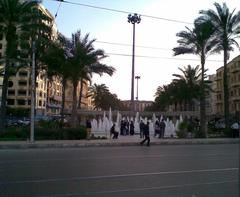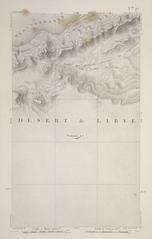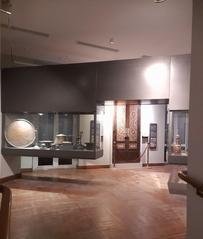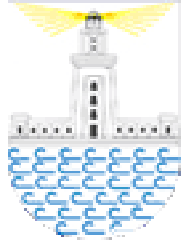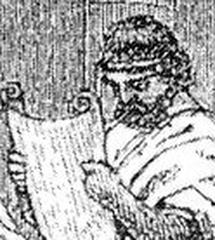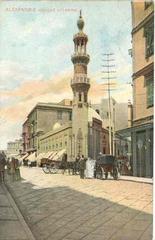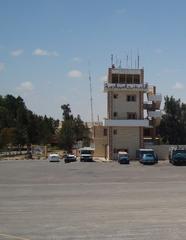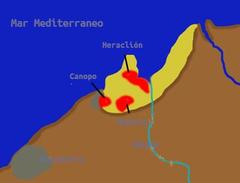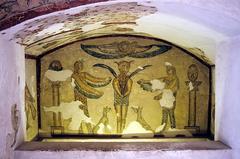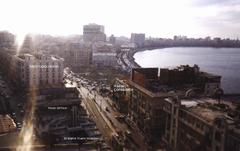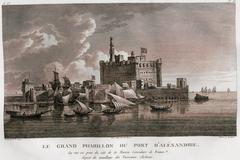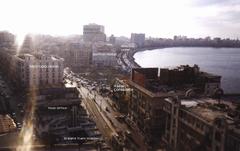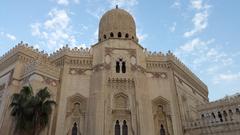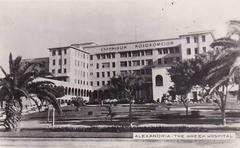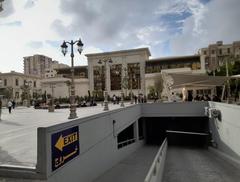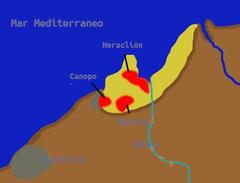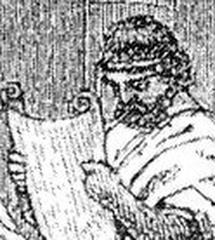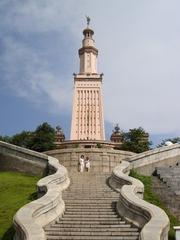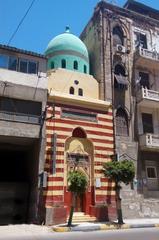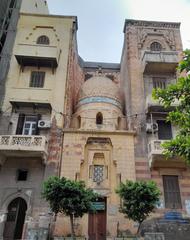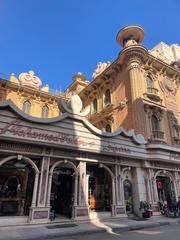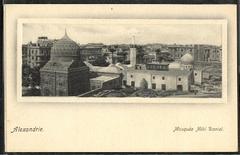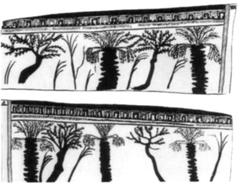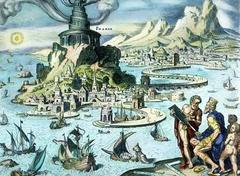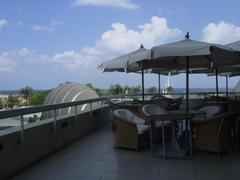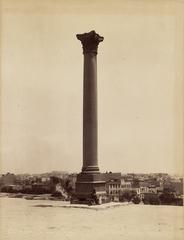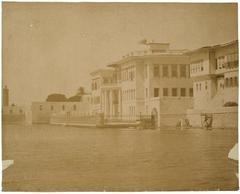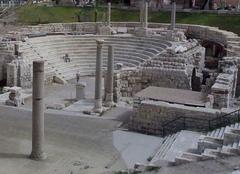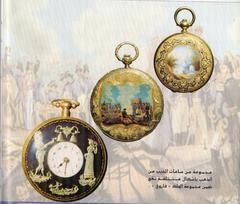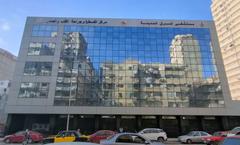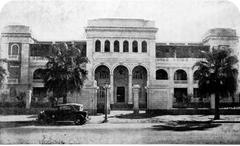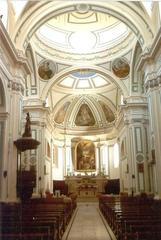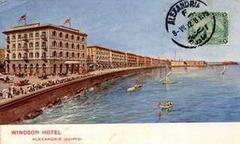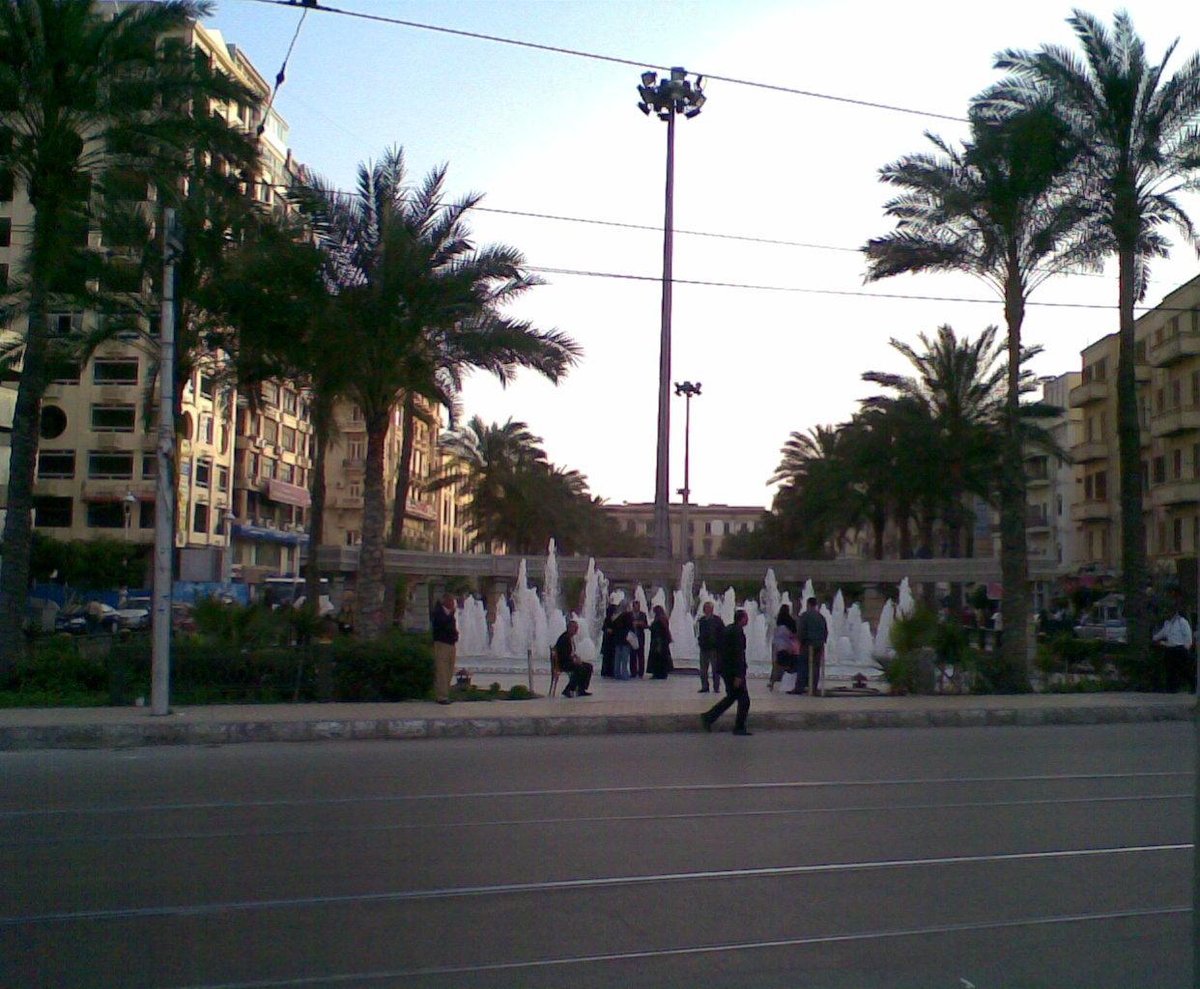
Ahmed Orabi Square, Alexandria, Egypt: Visiting Hours, Tickets, and Travel Guide
Date: 14/06/2025
Introduction: History and Cultural Significance
Ahmed Orabi Square, also known simply as Orabi Square, sits at the heart of Alexandria’s Mansheya district and stands as one of the city’s most emblematic and historically significant public spaces. Named after Ahmed Orabi, the Egyptian national hero who led the 1881 revolt against foreign domination, the square symbolizes the resilience and reformist spirit of Egypt.
Emerging from Alexandria’s modernization in the early 19th century under Mohamed Ali Pasha, Orabi Square was conceived through deliberate urban planning that contrasted with the older, organic street patterns of the city. Over time, it evolved into a vibrant commercial, administrative, and social hub, reflecting the city’s cosmopolitan identity as a Mediterranean port bridging Africa and Europe.
The square today is not just a crossroads of the city’s history and politics, but also a showcase of its architectural diversity, combining Ottoman, Italianate, and neoclassical styles. Iconic buildings such as Okalle Monferato and Okalle Menasce display strong Italian influences, while the square’s landscaped gardens and ornamental fountains provide spaces for community gatherings and relaxation.
Orabi Square remains freely accessible 24/7, with the most vibrant and safest atmosphere during daylight hours (8:00 AM to 6:00 PM). Its central location, excellent public transport links, and proximity to landmarks like the Alexandria National Museum, Roman Amphitheatre, and the Corniche make it an ideal starting point for exploring Alexandria’s rich heritage.
For additional background and visitor resources, see the Alexandria Official Tourism Website and this cultural study on Orabi Square.
Contents
- Introduction
- Historical Foundations and Urban Evolution
- Architectural and Urban Features
- Cultural, Political, and Social Significance
- Conservation and Current Condition
- Visiting Information: Hours, Access, and Tours
- Nearby Attractions
- Practical Tips for Visitors
- Frequently Asked Questions (FAQs)
- Summary and Recommendations
- Sources
Historical Foundations and Urban Evolution
Ahmed Orabi Square’s evolution mirrors Alexandria’s transformation from a military and trading port to a cosmopolitan metropolis. Initially part of larger administrative and parade grounds (Place d’Armes), the square was reimagined in the 19th century during a period of citywide modernization and European influence. By the late 1800s and early 1900s, Orabi Square had become a commercial and administrative center, as well as a focal point for civic activities (Case Study El Manshieh).
Its grid-based urban morphology, broad avenues, and central open space reflect 19th-century European planning principles, adapted to Alexandria’s unique context. The square’s location—close to the Mediterranean waterfront and intersecting major roads—has made it a defining node in the city’s urban fabric.
Architectural and Urban Features
Italianate and Eclectic Architecture
Orabi Square is renowned for its remarkable concentration of Italianate architecture:
- Okalle Monferato: Exemplifies Italian palazzo style with arcaded ground floors and ornate façades.
- Okalle Menasce: Designed in 1885 by Antonio Lasciac, featuring elaborate stonework and a central courtyard.
- Mixed Tribunals: Built in 1887 by Antonio Maniscalco Bey, showcasing neoclassical symmetry and monumental columns.
- Banco di Roma: Designed by Henri Gorra in 1905, inspired by Rome’s Palazzo Farnese.
These buildings, originally housing banks, consulates, and upscale residences, reflect Alexandria’s international connections and the adaptation of European styles to local needs. The square’s eclectic character blends Italian, French, and Egyptian motifs, visible in its façades, balconies, and ironwork.
Public Spaces and Urban Landscape
The square features landscaped gardens, ornamental fountains, and pedestrian-friendly open areas. These spaces offer a welcome respite from the city’s bustle and serve as venues for public gatherings, cultural events, and casual socializing.
Cultural, Political, and Social Significance
Ahmed Orabi Square is a living symbol of Egyptian national pride and civic engagement. Named after the leader of the Orabi Revolt, the square has hosted major political demonstrations, celebrations, and key moments in Egypt’s modern history, including the nationalist movements and the 1952 Revolution.
Throughout the 20th century, the square was Alexandria’s commercial and financial heart, home to institutions like the Anglo-Egyptian Bank, Lloyds Bank, and the Bank of Athens. Its hotels, cafés, and shops have long fostered a lively street life and cosmopolitan atmosphere (Case Study El Manshieh).
Today, many historic buildings serve as government offices or cultural centers, ensuring the square’s continued relevance while presenting modern challenges for preservation.
Conservation and Current Condition
Despite its heritage value, Orabi Square faces several conservation challenges:
- Façade Alterations: Modern signage and renovations have compromised some historic exteriors, particularly on Okalle Monferato and Okalle Menasce.
- Structural Degradation: Water damage, pollution, and neglect have affected stonework and interiors.
- Urban Cohesion Risks: Piecemeal development and insufficient regulation threaten the square’s architectural ensemble.
Efforts to safeguard the square’s legacy include building listings, integrated management among authorities, and public engagement through educational programs and guided tours (Case Study El Manshieh).
Visiting Information: Hours, Access, and Tours
Visiting Hours
- Orabi Square: Open year-round, 24 hours a day. Daylight visits (8:00 AM–6:00 PM) are recommended for a lively but safe experience.
- Surrounding Buildings: Some buildings may have restricted access or require tickets, especially for guided tours or events. Check with local tourism offices for current details.
Tickets
- Square Access: Free and open to the public.
- Special Exhibitions/Tours: Fees may apply for building interiors or organized tours.
Accessibility
- Easily accessible by tram, bus, taxi, or on foot.
- Paved walkways and ramps facilitate access for visitors with mobility needs, although some historic buildings may have limited accessibility.
Guided Tours and Events
- Local agencies and heritage organizations offer guided walking tours focusing on the square’s history and architecture. Booking ahead is advised.
- The square frequently hosts public celebrations, especially during national holidays (Alexandria Official Tourism Guide).
Nearby Attractions
- Alexandria National Museum: A short walk away, featuring artifacts spanning the city’s history.
- Roman Amphitheatre: Ancient ruins that reveal Alexandria’s Greco-Roman past.
- Menasce Synagogue: A symbol of the city’s multicultural legacy.
- Saint Mary and St. Moses the Black Coptic Orthodox Church: Highlights Alexandria’s religious diversity.
- The Corniche: Seafront promenade with Mediterranean views and seafood eateries.
- Bibliotheca Alexandrina: A modern library and cultural center.
Practical Tips for Visitors
- Best Times to Visit: Early mornings and late afternoons offer pleasant weather and lively street scenes.
- Dress Code: Modest attire is recommended, especially in markets and near religious sites.
- Safety: Tourist police are present; keep your belongings secure in crowded areas.
- Language: Basic Arabic is helpful; English is widely understood in tourist areas.
- Photography: Permitted in public spaces; always ask before photographing people.
- Payments: Cash is preferred for most transactions; carry small bills.
- Food and Water: Prefer established cafés; drink bottled water.
- Connectivity: Egyptian SIM cards and free Wi-Fi in many cafés and hotels.
Frequently Asked Questions (FAQs)
Q: Is there an entrance fee to visit Ahmed Orabi Square?
A: No, the square is a public space and free to visit.
Q: What are the best visiting hours?
A: Daytime hours (8:00 AM–6:00 PM) are ideal for safety and atmosphere.
Q: Are guided tours available?
A: Yes, several local operators offer tours that include Orabi Square.
Q: Is the square accessible for people with disabilities?
A: Main pathways are accessible, though some older buildings may have steps.
Q: What attractions are nearby?
A: The Alexandria National Museum, Roman Amphitheatre, Menasce Synagogue, and Corniche are all within easy reach.
Summary and Recommendations
Ahmed Orabi Square is a cornerstone of Alexandria’s urban and cultural landscape, offering layers of history, striking architecture, and vibrant civic life. Its central location and transport links make it a practical and rewarding base for exploring the city’s wider heritage. Despite conservation challenges, ongoing restoration and public engagement efforts are helping preserve this iconic site for future generations.
Visitor Recommendations:
- Explore the square during daylight for safety, atmosphere, and photography.
- Engage with local guides to deepen your understanding of the area’s history and architecture.
- Include nearby attractions in your itinerary for a fuller Alexandrian experience.
- Use the Audiala app for guided tours, updated event information, and travel tips.
Image Alt Text: Ahmed Orabi Square in Alexandria, featuring historic buildings, landscaped gardens, and the lively city center.
Download the Audiala app for personalized tours and city updates. Follow us on social media for the latest news and stories from Alexandria’s rich urban heritage.
Sources
- Case Study El Manshieh (Mohamed Ali) Square, 2025, 1Library.net
- Alexandria Official Tourism Guide, 2025, Visit Alexandria
- Ahmed Orabi Square Cultural Study, 2025, Academia.edu
- Archnet Alexandria Authority, 2025
- Mapcarta Location and Nearby Attractions, 2025
